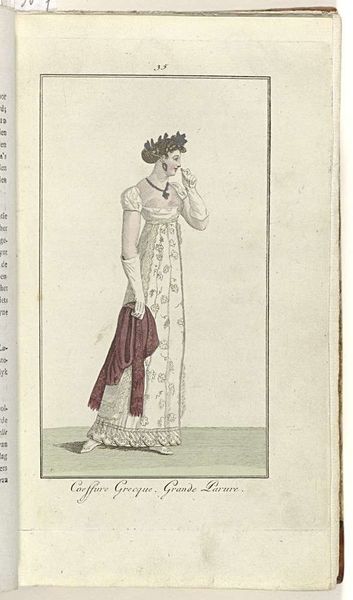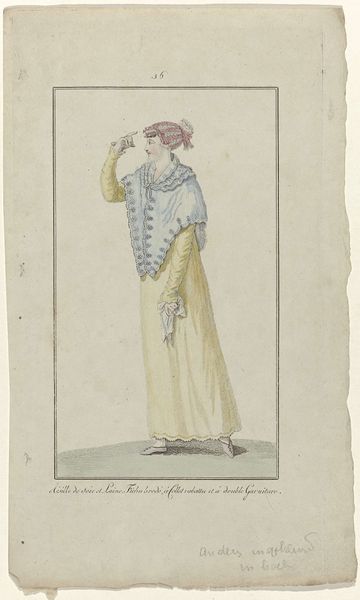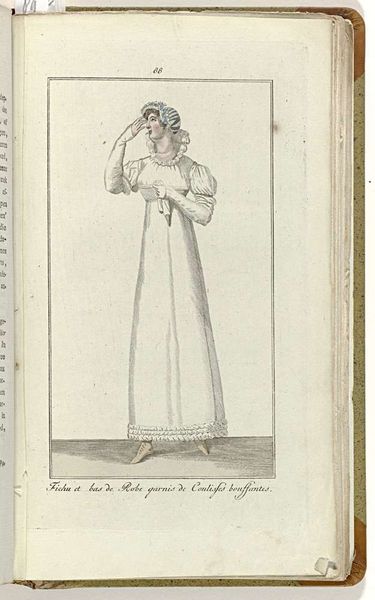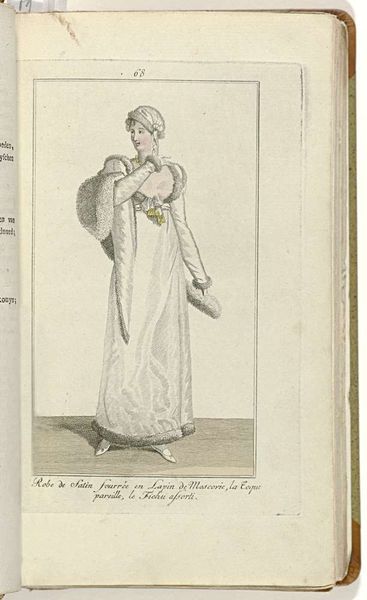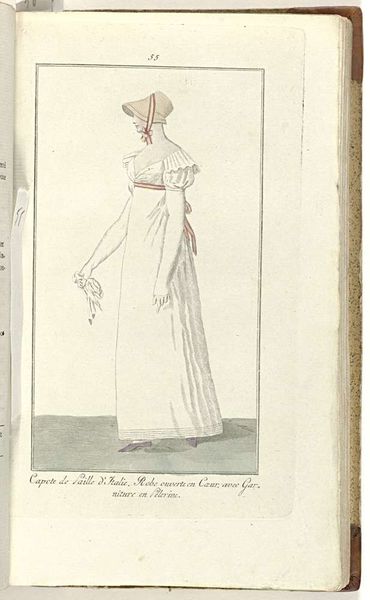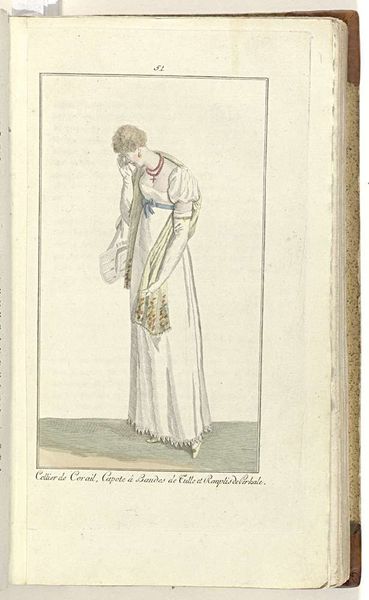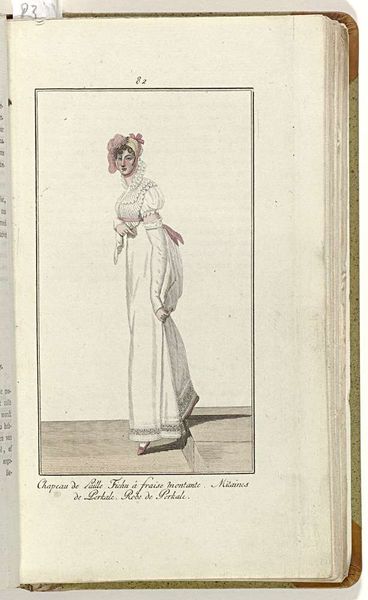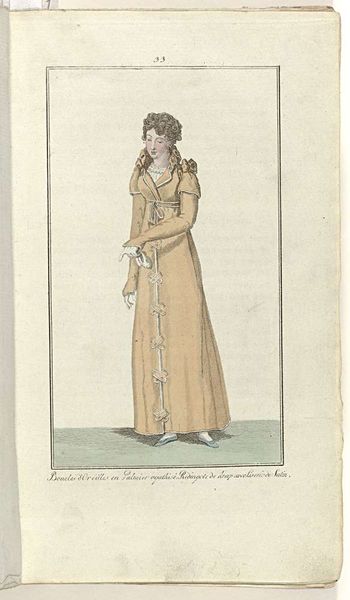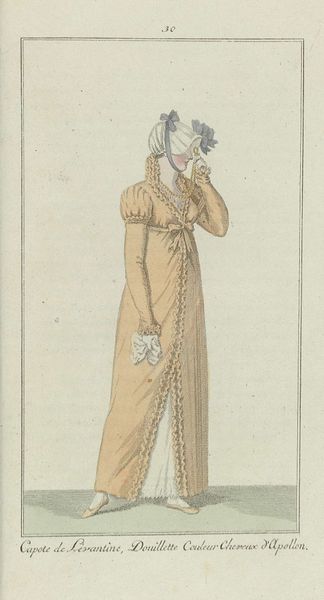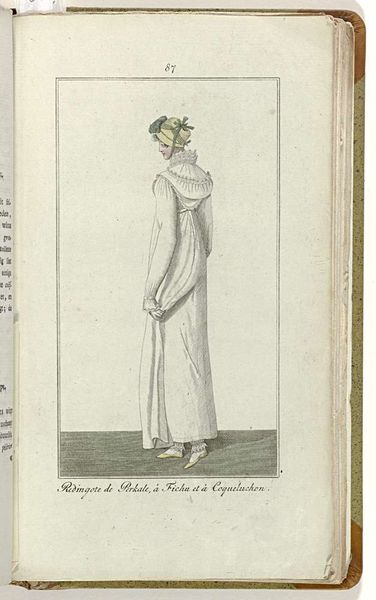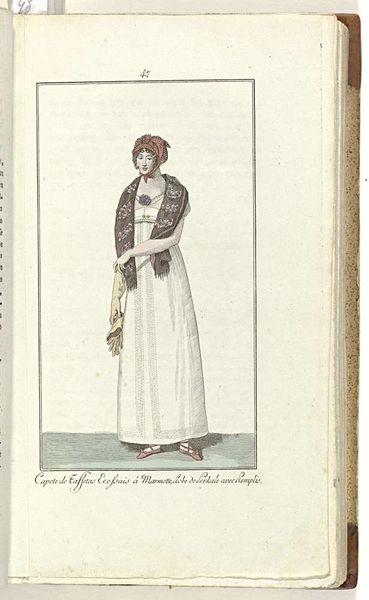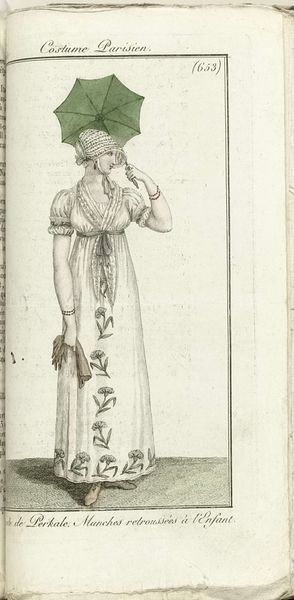
Elegantia, of tijdschrift van mode, luxe en smaak voor dames, Februari 1808, No. 36: Résille de soie et Laine... 1808
0:00
0:00
print, engraving
#
portrait
# print
#
figuration
#
romanticism
#
engraving
Dimensions: height 218 mm, width 120 mm
Copyright: Rijks Museum: Open Domain
Curator: What strikes me first is the overwhelming sense of delicacy. The light pastel shades and refined lines impart a certain air of gentility. Editor: It is subtle, almost fragile. We're looking at a print from 1808 called "Elegantia, of tijdschrift van mode, luxe en smaak voor dames, Februari 1808, No. 36: Résille de soie et Laine..." from the Rijksmuseum. It depicts a woman in the latest fashions. It reads almost like an advertisement for its time. Curator: Precisely, though advertisements can tell us a lot about the deeper longings of a society. That is what makes them interesting from a symbolic perspective. Here, we see an emphasis on luxury. Consider the French description beneath the image; a silk and wool knit trimmed with ruffled collar, double trim. This tells me this society places high value on beauty and craft. Editor: And who has access to such things? It reinforces societal divides, showcasing an ideal lifestyle reserved for a select few. Look at her gaze—a calculated disinterest, holding that little lorgnette up to her eye. It speaks to a certain performativity of wealth and status, even boredom. The woman is anonymous, which tells me she is representative of a "type" rather than an individual. This woman's likeness reinforces social order. Curator: An interesting point! However, I’m drawn to her expression. Does it betray a sense of vulnerability, as though she knows she's performing a role for a stage she did not set? There's a subtle tension that emerges for me between display and the underlying sense of perhaps being restricted by that display. Editor: The Romantic style certainly plays into that feeling of melancholy and interiority. But for me, this image becomes more charged if we position it against a wider context. A new kind of wealth arose in France during the reign of Napoleon, accompanied by profound inequality. Curator: Ah, so you read the overall composition not as a portrait of privilege, but as an example of historical context and potentially inequality? Editor: Not a portrait, but an intersection. Looking closely allows us to view material culture—fashion in this instance—and interrogate its social power. Curator: It’s fascinating how this single print provides such diverse yet converging lines of inquiry. The personal intertwined with collective realities. Editor: Yes. Art allows us not only to gaze backward but reflect on the continuous performances shaping our world today.
Comments
No comments
Be the first to comment and join the conversation on the ultimate creative platform.
